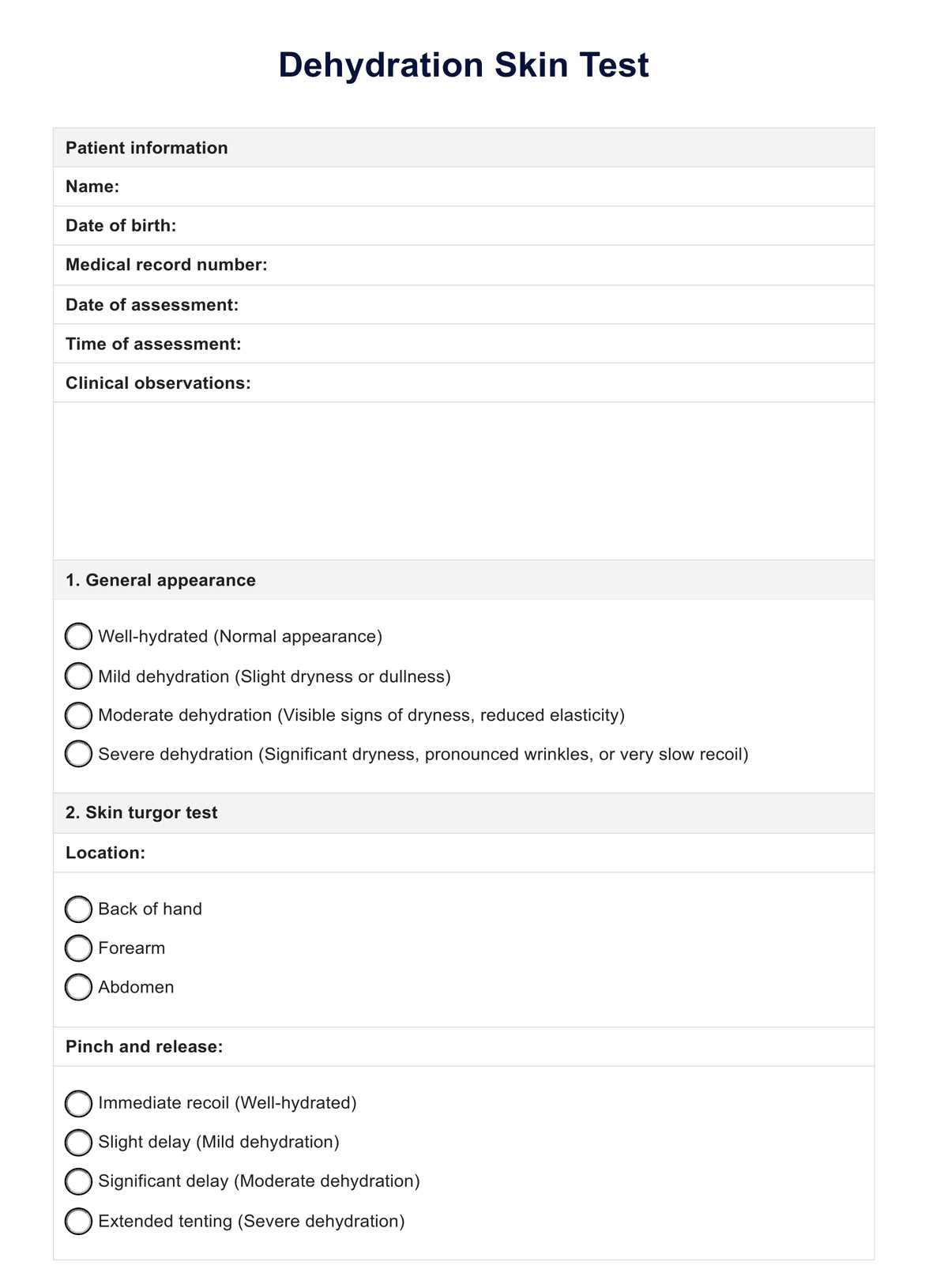It works. However, factors like age, skin elasticity, and overall health can impact the accuracy of the results. For instance, an older person's skin naturally loses some elasticity, making the pinch test less precise. A wellness expert often uses the pinch test as a part of a broader assessment, considering other signs and symptoms of dehydration.

Dehydration Skin Test
Assess if your patient is dehydrated by conducting the skin-pinch test and using our Dehydration Skin Test template.
Dehydration Skin Test Template
Commonly asked questions
Testing for dehydration can be done through a pinch test, where you pinch the skin, and if it takes more than a few seconds to return to normal, dehydration may be present.
Dehydrated skin or poor skin turgor is recognized by its rough and dry texture, often accompanied by flaky patches, reduced elasticity, prominent wrinkles, fine lines, and a lack of natural glow. The condition can be reversed by drinking water or eating foods with high water content, such as cucumbers and watermelon.
EHR and practice management software
Get started for free
*No credit card required
Free
$0/usd
Unlimited clients
Telehealth
1GB of storage
Client portal text
Automated billing and online payments











